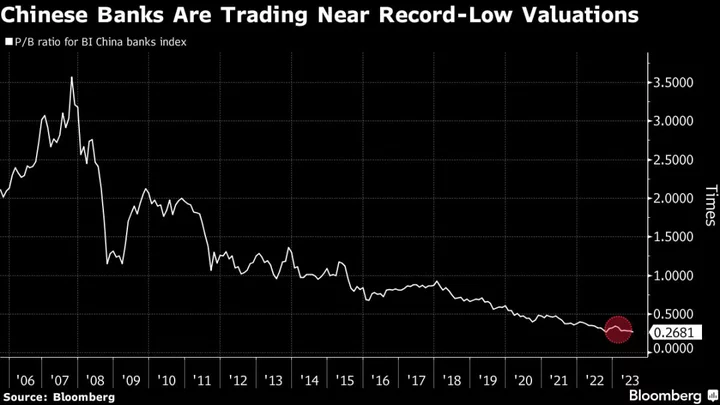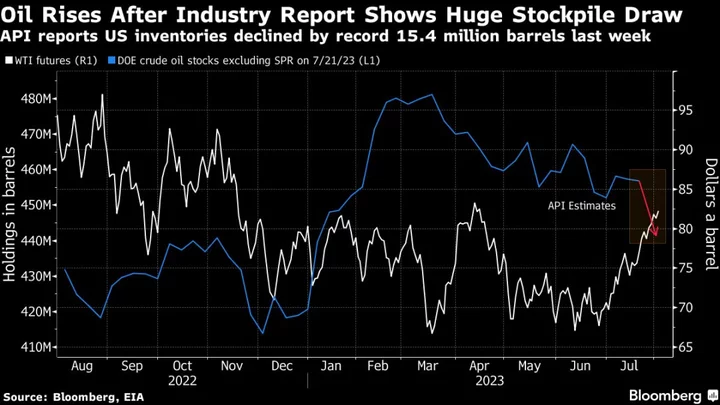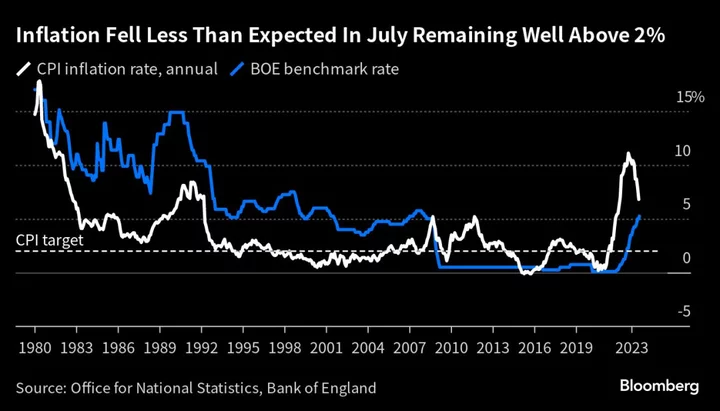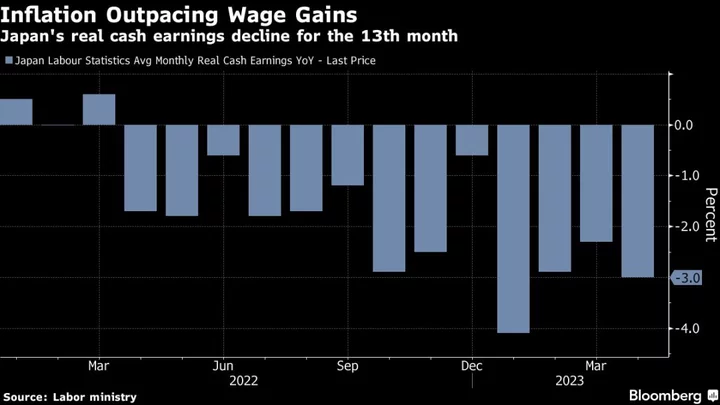Investors in Chinese bank stocks are getting a painful reminder of who’s likely to bear the brunt of government efforts to shore up the embattled real estate sector and revive economic growth.
A Bloomberg Intelligence stock index of Chinese lenders has tumbled 14% from this year’s high in May through Monday’s close, erasing $77 billion of market capitalization and leaving the industry’s shares on the cusp of their lowest-ever valuations. The gauge has turned flat after registering mild early gains Tuesday.
Already under pressure from Beijing’s monetary loosening and tepid demand, concerns about banks have heightened after authorities asked lenders to extend loan relief for developers as a housing crisis continues. Some Wall Street banks also have turned cautious, with Goldman Sachs Group Inc. taking a bearish view on the sector, a move that drew a rare rebuttal from a state-run Chinese newspaper last week.
The Bloomberg Intelligence gauge of Chinese bank stocks is trading at 0.27 times book value, just a whisker away from late October’s record low. That compares with 0.9 times for a global bank gauge.
The extension of relief measures for developers “will likely provide more of a sentiment boost to investors without fundamentally easing investors’ concern on commercial banks’ credit risk on troubled developers,” Citigroup Inc. analysts including Griffin Chan and Judy Zhang wrote in a note. Banks with high mortgage exposure could be more vulnerable, they added.
Regulators said late Monday they have asked banks to ease terms for real estate firms by encouraging negotiations to extend outstanding loans, a move that aims to ensure the delivery of homes still under construction. Some outstanding loans — including trust loans due by the end of 2024 — will be given a one-year repayment extension.
Chinese lenders’ risk exposure to property amounted to about 20 trillion yuan ($2.8 trillion) as of the end of last year, including loans and bonds, accounting for about 5% of their total assets, according to estimates by China International Capital Corp. analysts including Lin Yingqi. Meantime, the non-performing loan ratio of real estate debt was about 4% at that time, they added.
The sector also stands conspicuously at the receiving end of risks from the $9 trillion debt pile among China’s local government financing vehicles as an economic recovery falters. Worries about their balance-sheet health have grown after Bloomberg News reported that top state lenders are offering LGFVs loans with ultra-long maturities and temporary interest relief to prevent a credit crunch.
Goldman estimates that 34 trillion yuan of local government debt sits on the balance sheets of banks it covers. These lenders’ combined assets account for 61% of the banking system’s total, according to the brokerage.
Chinese commercial banks’ net interest margin slid to a record low of 1.74% in March, according to data from the National Financial Regulatory Commission, below the 1.8% threshold that analysts and industry practitioners deem necessary to maintain reasonable profitability.
The lenders have seen their margins squeezed as they were urged by authorities to provide cheap loans to small businesses and home buyers to help prop up the economy. Loan demand from businesses and households, however, has weakened as a property bubble deflates and companies scale back investment.
“Since it’s hard for developers to improve their liquidity, banks still have to suffer the high possibility that most of their lending could turn into bad loans,” said Shen Meng, a director with Beijing-based investment bank Chanson & Co. “The latest policy can only help banks postpone their risk exposure.”
(Updates prices and with more analyst comments)









